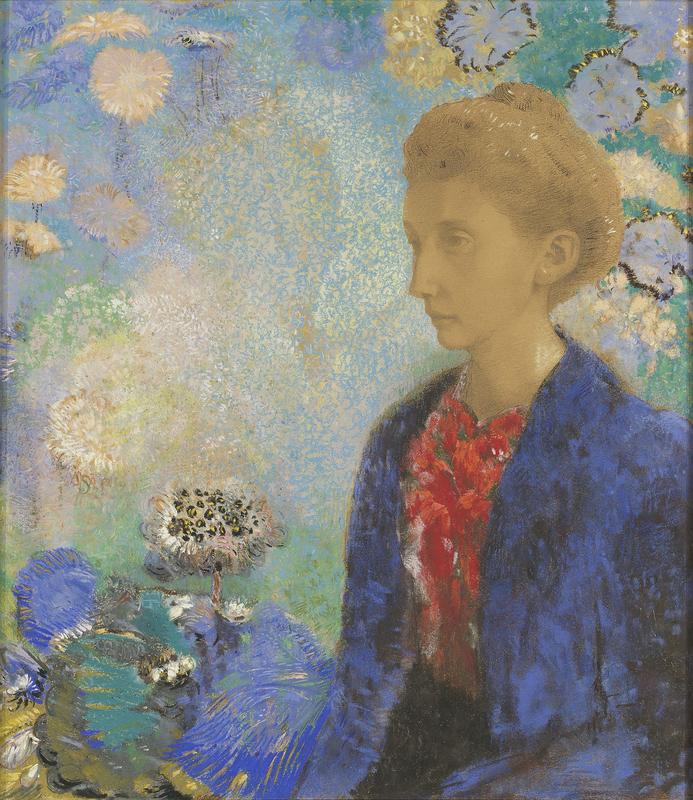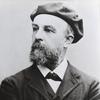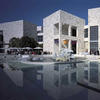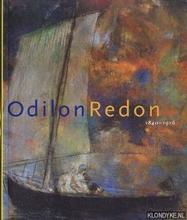More about Baronne de Domecy
- All
- Info
- Shop
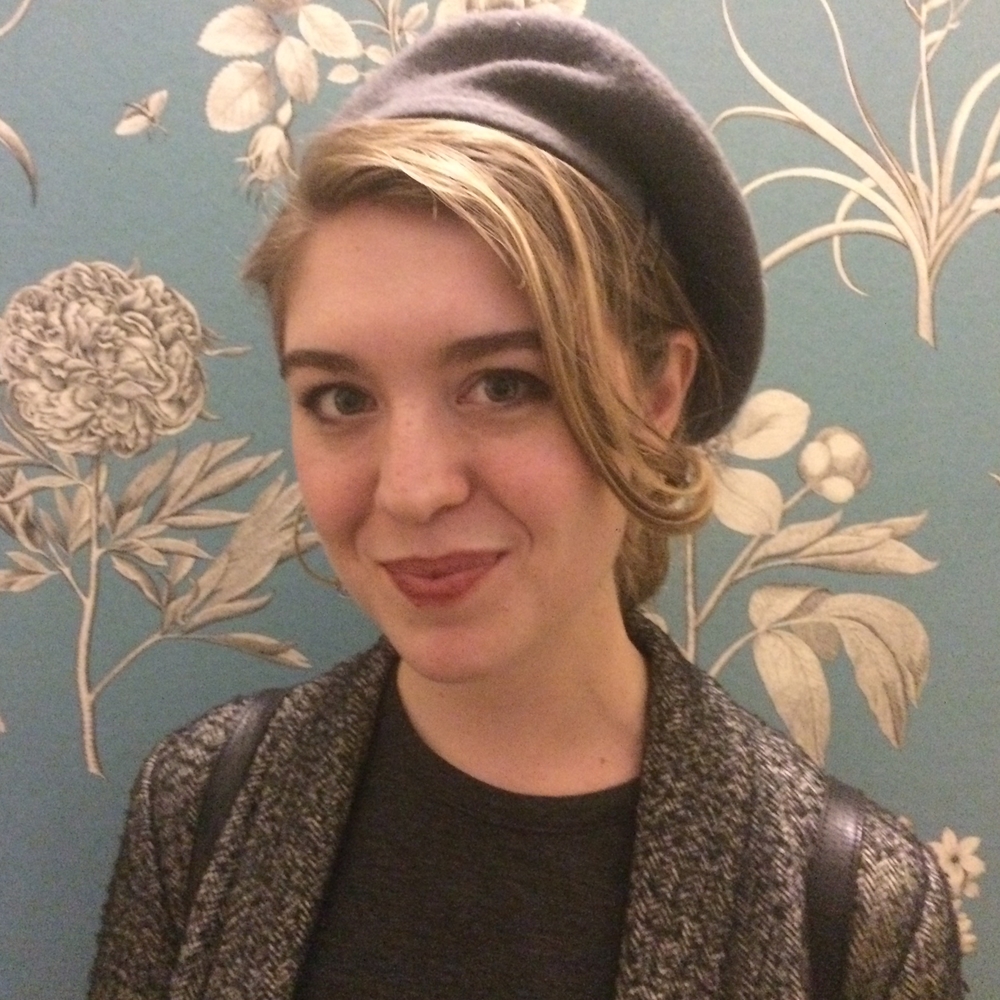
Contributor
In the 1890s, Odilon Redon realized you can only paint in black-and white for so long before you get bored and start making colorful portraits like this one.
As one of the original French Symbolists working near the end of the 19th century, Redon gained a reputation for turning away from realistic depictions of the external world, looking inward instead for inspiration and representing in his work a series of dream-visions, figures from mythology, and fantastical creatures of his own invention. You’d never guess it from looking at this brightly-colored and super trippy portrait of the wife of his friend and patron, Baron Robert de Domecy, but for the first 60 years of his life, he actually depicted this otherworldly subject matter exclusively in black-and-white, producing a series of charcoal drawings and lithographs (which he called his noirs) bizarre enough to become a huge source of inspiration for the Surrealists in the following century. A regular ahead-of-his-timer, that Odilon was.
Explaining these monochromatic early years, Redon once wrote that he saw black as “the most essential color” and “the agent of the spirit much more than the splendid color of the palette or the prism.” It seems like he was just going through kind of a goth phase though, because by the time he’d been commissioned to paint this portrait of Baronne de Domecy, he’d clearly had a change of heart. Countless “splendid” colors swirl around her, forming a cloud of vaguely organic abstract forms simultaneously resembling flowers and underwater life. The only part of the portrait not totally saturated in color is the preoccupied face of the Baronne herself, which is drawn lightly enough in pencil to reveal the brown paper underneath. This suggests that Redon’s primary focus in this piece wasn’t, as one might conventionally expect, the external appearance of the Baronne. Instead, he was interested in her inner world, translated into forms meant not to literally represent anything in particular but to evoke an intangible feeling—or, as Redon phrased it, “effects produced by the abstract character of line.”
If this sounds like the beginnings of Abstract Expressionism to you, you’re spot-on. Along with the other Symbolists, Redon was thinking about the capacity of color and line to evoke unconscious, emotional responses in viewers way before the likes of Jackson Pollock and Mark Rothko came on the scene. The Symbolists wanted to represent all that lay beneath surface appearances in their art: dreams, emotions, and the all-important (and admittedly pretty vague) “Idea” with a capital “I” hyped up so enthusiastically by poet and critic Jean Moréas in his 1886 Symbolist Manifesto. This shift in focus from the visible to the invisible world was also echoed in the discovery by the natural sciences of many new, invisible forces in the 19th century (such as infrared light, X-rays, and electromagnetic fields), a trajectory which likely influenced the later development of abstraction by artists like Hilma af Klint, Wassily Kandinsky, and Piet Mondrian. The newfound reality of such unseen forces made them ripe for artistic representation: if both were equally a part of nature, why not paint electromagnetic waves instead of a landscape? Why not music then, or a feeling?
Redon’s own fascination with all things invisible may have begun in 1860, when he met his BFF-to-be, botanist and amateur philosopher Armand Clavaud, who gave the young artist his first glimpse of microbial life through the lens of his microscope. Although people had known about the existence of microorganisms since the microscope’s invention around 1590, nobody could quite figure out what it was they did until the development of germ theory in the mid-19th century. While it may seem obvious to us enlightened modern folk that the spread of microorganisms (i.e., germs) is what makes us sick, back in the day, people had all sorts of crazy notions about how diseases spread. Before sickness was connected to germs, for example, the most popular explanation for contagion was miasma theory, which held that illnesses could be spread through bad-smelling air. As good a guess as any, I suppose? Needless to say, the 19th century was an exciting time to be studying microbes, and Redon, like so many of the scientists and scientifically-minded of his day, was fascinated by new discoveries being made in the field, many of which conjured up new and enchanting possibilities of entire tiny universes lying parallel to our own humdrum reality, just waiting to be explored.
On a related note, Redon was probably the world’s biggest fan of one of the key players in the development of germ theory, Louis Pasteur—you know, the guy who got everyone to start pasteurizing their milk?—and in the 1880s sent him an enthusiastic fan letter accompanied by a set of his microbe-inspired lithographs, Origins (1883). Pasteur responded (very kindly) that it took the touch of an artist like Redon to give life to monstrosities, a comment which Redon would cherish for the rest of his life. The influence of Redon’s interest in microbes can also be observed in the abstract forms of this portrait: they appear a bit floral, a bit aquatic, and also a bit like they may have been inspired by clusters of single-celled organisms, seen up close through a microscope.
Unfortunately, not much is known about Baronne de Domecy herself (not even her first name!), but it can be surmised from this portrait that Redon saw in her something of a kindred spirit. She’s presented here as belonging more to the realm of dreams than that of reality, the brightly-colored shapes around her speaking to a rich inner life and the vivid red of her shirt suggesting that Redon saw a world of passion lying beneath her otherwise cool exterior. Still, I can’t help but wonder what she was really thinking about. Deep, introspective philosophy on the nature of abstraction? What to eat for dinner that night? Regardless, the portrait provides a fascinating window into the influence of the natural sciences on the arts, demonstrating that artists like Redon were already experimenting with abstraction as early as 1900. Take that, Kandinsky!
Sources
- “Abstract Art,” Tate, accessed March 16, 2020, https://www.tate.org.uk/art/art-terms/a/abstract- art.
- “Around Redon,” Musée d’Orsay, accessed February 23, 2020, https://www.musee-orsay.fr/en/ collections/around-redon.html.
- “Baronne de Domecy,” The J. Paul Getty Museum, accessed March 13, 2020, http:// www.getty.edu/art/collection/objects/224761/odilon-redon-baronne-de-dom…- about-1900/.
- Davenport, Nancy. “Odilon Redon, Armand Clavaud, and Benedict Spinoza: Nature as God.” Religion and the Arts 10, no. 1 (2006): 5-38, https://doi-org.ezproxy.lib.gla.ac.uk/ 10.1163/156852906776520245
- Larson, Barbara. “Odilon Redon and the Pasteurian Revolution: Health, Illness, and le monde invisible,” Science in Context 17, no. 4 (2004): 503-524, https://doi- org.ezproxy.lib.gla.ac.uk/10.1017/S0269889704000249.
- —. The Dark Side of Nature: Science, Society, and the Fantastic in the Work of Odilon Redon. University Park, PA: The Pennsylvania State University Press, 2005.
- McKenzie, Janet. “Beyond the Visible: The Art of Odilon Redon,” Studio International, last modified February 22, 2006, https://www.studiointernational.com/index.php/beyond-the- visible-the-art-of-odilon-redon.
- Moréas, Jean. “Manifesto of Symbolism (1886),” trans. by A.S. Kline, Poetry in Translation, accessed March 14, 2020, https://www.poetryintranslation.com/PITBR/French/ MoreasManifesto.php.
- “Symbolism,” Tate, accessed March 14, 2020, https://www.tate.org.uk/art/art-terms/s/ symbolism.

